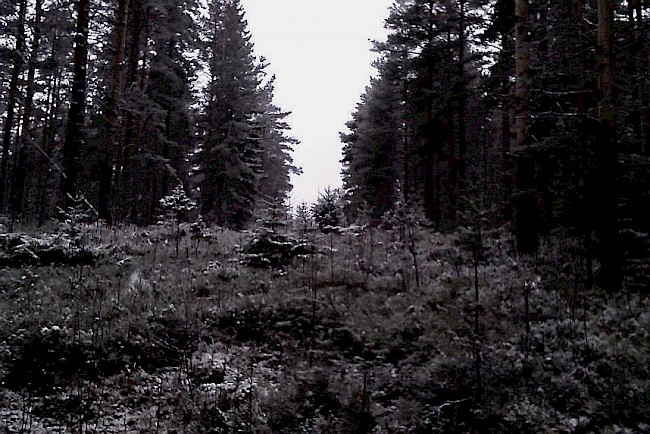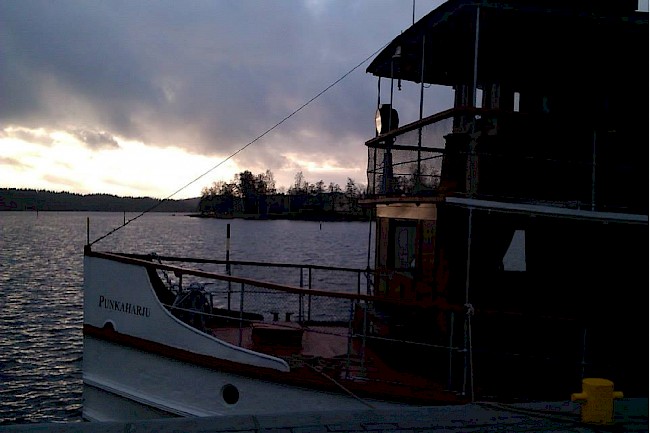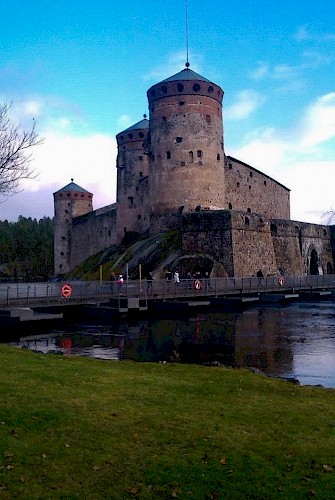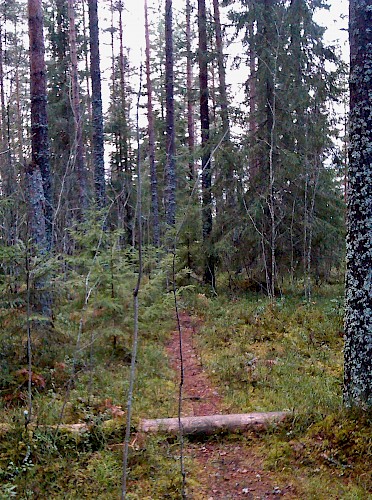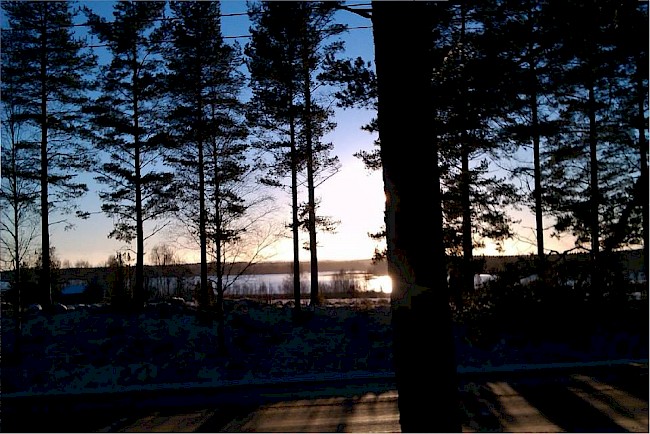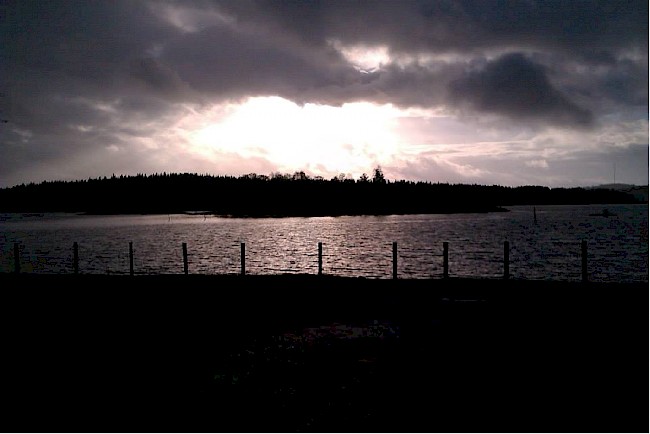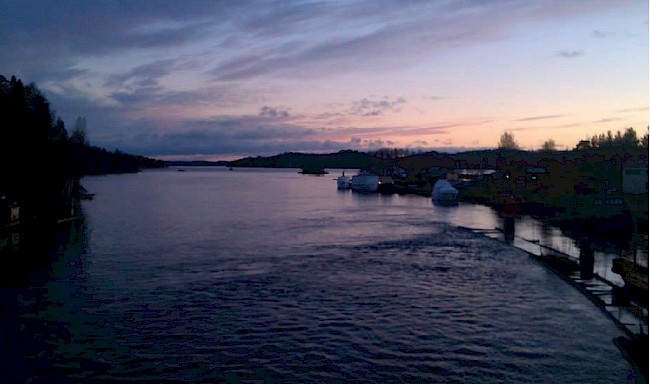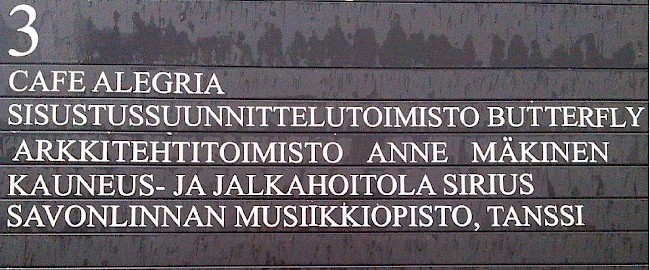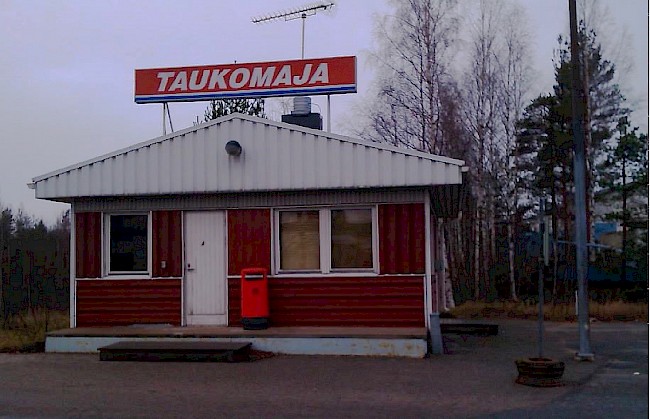Winter anthropology in Finland
Exploring ‘green care’ in low light
—
Abstract
Environment and human health
The use of natural environments to promote human health and well-being is part of a longer tradition of developing landscapes as therapeutic spaces (Gesler 1996, 1992) something that Brown and Bell (2007) term the ‘medicalization of nature’. This phenomenon can be traced back to the Victorian use of open-air hospitals (Hickman 2013) and nature-based sanatoriums (Rush [1835] 2003), the health benefits of which have been confirmed by a growing body of evidence (Husk et al. 2016; Wheeler et al. 2012). The environments used for health interventions are typically classified as either blue space (White, Smith et al. 2010; White, Pahl et al. 2016) or green space (Bell et al. 2014), depending on whether they occur on water or land, respectively. Scholars have studied concepts of Nordic well-being (Hjalager and Flagestad 2011), lakewellness (Konu, Tuohino, and Komppula 2010; Tuohino 2013), and, in southerly parts of Europe, alpine wellness (Weiermair and Steinhauser 2003). The psychological premise of these health interventions is that natural environments offer patients ‘soft fascination’ (van den Berg et al. 2010), meaning that the natural environment is neither over- nor understimulating, but creates balanced conditions for the mind to be receptive to treatments like cognitive behaviour therapy (CBT) or counselling. Equally, if a health care intervention, like one focused on building confidence, requires an energetic setting, nature can provide rough seas, storms, and sheer rock faces for such activities. To this end, nature acts as a structure onto which health care interventions can be grafted, depending on the needs of the patient. Activities often map onto changes in seasons, allowing for a holistic suite of health programmes, many of which are location specific. Hence, whilst CBT protocols may be similar between countries, how interventions play out in Finland, California, or coastal South Africa can be very different. The treatment setting in this regard is often just as important as the treatment method.
Green care
The data for this essay originates from ethnographic work in Finland with green and blue space organisations, in particular with a network of organisations that utilise the concept of green care (Soini 2012). ‘Green care is an inclusive term for many “complex interventions” such as care farming, animal-assisted therapy, therapeutic horticulture and others’, write Sempik, Hine, and Wilcox (2010, 11). These treatment settings are quite unique from a medical anthropology perspective, particularly as green care practitioners are more concerned with the mediation/reciprocal relationship between the natural environment and people’s health than with the interactions of people within a given space. Whilst staff and other patients play a part, they are not considered the central mechanism for achieving improved health and well-being, and are allocated a more auxiliary role.
As such, the ethnographic approach I took was more concerned with the context in which people worked and were treated, rather than the lives of the people themselves. Data collection involved shadowing the service providers, consequently I was exposed to the environments in which patients experienced treatment. Because of the arboreal nature of Finland, green care organisations set many interventions in forested locations (image 1). Finland is also particularly fluvial, and many nature-based activities involved lakes, rivers, or inlets (image 2.)
Perhaps ironically, my approach to ethnographic research draws heavily from the works of Pierre Bourdieu and his anthropological explorations of French colonial Algeria (Bourdieu and Schultheis 2012), where light levels and climate provided a different, but still complicated, set of methodological issues for visual methods.
This photo essay emphasises the difficulties of undertaking visual fieldwork in low light settings. As a contrast to the darkness of images 1 and 2, image 3 captures summer light at the fifteenth-century Olavinlinna fortress on Kuussalmi Lake.
Image 4 presents an image of a forest in better light conditions, a marked contrast from images 5–7.
In addition to being taken in rural locations, a common feature in images 1 and 2 is their low light levels. This was because the majority of fieldwork occurred during the winter months. Conducting ethnographic research during this season (especially in outdoor conditions) creates particular challenges for visual methods and data capture in general. The longitude and the season mean that there is a semipermanent dusk or dawn, depending on the time of the day, as shown in images 6 and 7.
Low light reduces the hours available to conduct research when studying outdoor-based health interventions. Reducing the amount of time for fieldwork may thus change what is observed and learned.
Working during the winter in Northern Europe and the Arctic region results in a particular aesthetic in the visual materials produced. Not only does it limit the types of nature-based therapy that can be observed but it also colours how images are captured and framed, and, possibly, analysed afterwards.
Because of the season, green care activities included traditional winter pastimes; for example, in image 8 we see carers and patients from a dementia facility in a wooden cabin, together smoking fish. Data collection involved participating in the patients’ activities, such as smoking fish, gardening, and eating meals together. Furthermore, structured interviews were conducted with staff at different locations.
 8. Smoking fish and drinking coffee with patients and carers in Muurutvirta, Northern Savonia Region, 2013.
8. Smoking fish and drinking coffee with patients and carers in Muurutvirta, Northern Savonia Region, 2013.Challenges to fieldwork
Pragmatically, when outdoors in 5 to 15 degrees Fahrenheit, writing notes becomes more challenging, and I relied more heavily on visual methods or the use of an audio recorder. My knowledge of Finnish was limited, but it was possible to talk to the service providers in English; however, I was unable to communicate extensively with patients due to either their state of health or my limited ability to converse in the native language. Hence, visual techniques were more useful to collect data.
Finnish is part of the Uralic language group, and it has a grammar, case system, and agglutinative morphology that is very different from English or other European languages. A sign from my host institution is shown in figure 9.
Not knowing the language well can have implications for fieldwork. Once, returning from many hours of data collection in the southern part of the country, after a long journey, I wearily exited the train. A combination of heavy snow, darkness, and my inability to understand Finnish resulted in me getting off at the wrong station, several stations too early, in an area named Simpele.
I found myself at a train stop without a population centre, without signage. The stop exists mainly to offload lumber from the country’s extensive timber industry. Without directions or a map, I walked in the evening snow and darkness until I came upon a gas station; I managed to ask someone there for the nearest place to stay. I was in luck: after a thirty-minute walk in the snow to the closest truck-stop motel, I arrived at my eventual accommodation for the evening (image 10).
One of the lessons to take away from my error is to understand the level of diligence that is required to avoid making mistakes when conducting fieldwork in countries where you are unfamiliar with the language, especially in isolated, rural areas.
Despite my cautionary warning, I hope to have illustrated that outdoor ethnographic data collection in winter environments can offer unique photographic opportunities, even if it comes with a certain amount of challenge.
Acknowledgements
This research was also supported by the COST Action IS1204: Tourism, Wellbeing and Ecosystem Services (TObeWELL) Short-Term Scientific Mission (STSM) fund. I would also like to thank Henna Konu, Anja Touhino, Katarina Boijer, and Iiro Juola for support in translation.
About the author
John Tredinnick-Rowe is a research fellow in complex interventions at Peninsula Medical School. His interests centre on qualitative health services research, but also extend to medical education, trials, assessment, semiotics, and policy evaluation. He also has an interest in qualitative methodologies, including ethnography, interviewing, and focus groups. His work both predoctoral and postdoctoral has focused on the coproduction of research with local health care organisations and the public, private, and third sectors. He also holds an honorary research fellowship at Exeter Medical School and runs a private research consultancy with a focus on innovation, commercialisation, and knowledge exchange for clinical companies.
References
Bell, Sarah L., Cassandra Phoenix, Rebecca Lovell, and Benedict W. Wheeler. 2014. ‘Green Space, Health and Wellbeing: Making Space for Individual Agency’. Health & Place 30: 287–92. http://doi.org/10.1016/j.healthplace.2014.10.005.
Bourdieu, Pierre, and Franz Schultheis. 2012. Picturing Algeria. New York: Columbia University Press.
Brown, Tim, and Morag Bell. 2007. ‘Off the Couch and on the Move: Global Public Health and The Medicalisation of Nature’. Social Science & Medicine 64 (6): 1343–54. http://doi.org/10.1016/j.socscimed.2006.11.020.
Gesler, Wilbert M. 1992. ‘Therapeutic Landscapes: Medical Issues in Light of the New Cultural Geography’. Social Science & Medicine 34 (7): 735–46. http://doi.org/10.1016/0277-9536(92)90360-3.
Gesler, Wil. 1996. ‘Lourdes: Healing in a Place of Pilgrimage’. Health & Place 2 (2): 95–105. http://doi.org/10.1016/1353-8292(96)00004-4.
Hickman, Clare. 2013. ‘“To Brighten the Aspect of Our Streets and Increase the Health and Enjoyment of Our City”: The National Health Society and Urban Green Space in Late-Nineteenth Century London’. Landscape and Urban Planning 118: 112–19. http://doi.org/10.1016/j.landurbplan.2012.09.007.
Hjalager, Anne-Mette, and Arvid Flagestad. 2011. ‘Innovations in Well-being Tourism in the Nordic Countries’. Current Issues in Tourism 15 (8): 725–40. https://doi.org/10.1080/13683500.2011.629720.
Husk, K., R. Lovell, C. Cooper, W. Stahl-Timmins, and R. Garside. 2016. ‘Participation in Environmental Enhancement and Conservation Activities for Health and Well-being in Adults: A Review of Quantitative and Qualitative Evidence’. Cochrane Database of Systematic Reviews 5. https://doi.org/10.1002/14651858.CD010351.pub2.
Konu, Henna, Anja Tuohino, and Raija Komppula. 2010. ‘Lake Wellness: A Practical Example of a New Service Development (NSD) Concept in Tourism Industries’. Journal of Vacation Marketing 16 (2): 125–39. https://doi.org/10.1177/1356766709357489.
Rush, Benjamin. (1835) 2003. Medical Inquiries and Observations upon Diseases of the Mind. 5th ed. Philadelphia: Grigg and Elliot.
Sempik, Joe, Rachel Hine, and Deborah Wilcox. 2010. Green Care: A Conceptual Framework. A Report of the Working Group on the Health Benefits of Green Care. Loughborough: Centre for Child and Family Research, Loughborough University.
Soini, Katriina. 2012. ‘Development of Green Care in Finland’. In Green Care in the Nordic Countries: A Research Field in Progress, edited by Bente Berget, Lena Lidfors, Anna María Pálsdóttir, Katriina Soini, and Karen Thodberg, 13–15. Trondheim: HealthUMB, Norwegian University of Life Sciences.
Tuohino, Anja. 2013. ‘The Potential of Lakes and Lake Landscape in the Concept of Nordic Wellbeing’. Polish Journal of Natural Sciences 28 (2): 267–81.
van den Berg, Agnes E., Jolanda Maas, Robert A. Verheij, and Peter P. Groenewegen. 2010. ‘Green Space as a Buffer between Stressful Life Events and Health’. Social Science & Medicine 70 (8): 1203–10. https://doi.org/10.1016/j.socscimed.2010.01.002.
Weiermair, Klaus, and Caroline Steinhauser. 2003. ‘New Tourism Clusters in the Field of Sports and Health: The Case of Alpine Wellness’. Paper prepared for the 12th International Tourism and Leisure Symposium, April, Barcelona. https://www.esade.edu/cedit2003/pdfs/weirmairklaus.pdf.
Wheeler, Benedict W., Mathew White, Will Stahl-Timmins, and Michael H. Depledge. 2012. ‘Does Living by the Coast Improve Health and Wellbeing?’ Health & Place 18 (5): 1198–1201. https://doi.org/10.1016/j.healthplace.2012.06.015.
White, M. P., S. Pahl, B. W. Wheeler, L. E. F. Fleming, and M. H. Depledge. 2016. ‘The “Blue Gym”: What Can Blue Space Do for You and What Can You Do for Blue Space?’ Journal of the Marine Biological Association of the United Kingdom 96 (1): 5–12. https://doi.org/10.1017/S0025315415002209.
White, Mathew, Amanda Smith, Kelly Humphryes, Sabine Pahl, Deborah Snelling, and Michael Depledge. 2010. ‘Blue Space: The Importance of Water for Preference, Affect, and Restorativeness Ratings of Natural and Built Scenes’. Journal of Environmental Psychology 30 (4): 482–93. https://doi.org/10.1016/j.jenvp.2010.04.004
